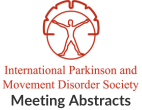Encephalomyelopathy Due to Cerebrotendinous Xanthomatosis
Objective: To present a case in which the MRI of a patient with cerebrotendinous xanthomatosis (CTX) revelaled impairment of whole neuroaxis. Background: CTX is a…Need of next generation sequencing technology to de-convolute autosomal recessive cerebellar ataxias in India
Objective: Comparison of two next generation platform to screen ARCA patients in Indian population Background: India is deficient with the molecular screening of the ARCAs.…Neuropathology in a case of HD-like syndrome caused by mutations in RNF216
Objective: To describe the neuropathology in a rare case of autosomal recessive HD like syndrome due to homozygous RNF216 mutations. To confirm the hypothesis of…Clinico-genetic correlation in Indian Spinocerebellar ataxia Type 1 (SCA1) patients
Objective: To conduct a clinical and genetic analysis of SCA 1 in Indian population. Background: Spinocerebellar ataxia type1 (SCA1) is a neurodegenerative disease caused by…Rare ADCY6 variants in two families with cerebellar ataxia, neuropathy and vestibular areflexia syndrome (CANVAS)
Objective: To reveal a genetic cause for a syndrome of combined cerebellar ataxia, neuropathy and vestibular areflexia (CANVAS). Background: CANVAS is a clinically defined neurological…A new distinct spastic ataxia with hypomyelination: Clinical, neuroimaging and molecular expression of NKX6-2 mutations
Objective: To identify the phenotypic, neuroimaging and genotype-phenotype expression of NKX6-2 mutations. Background: Despite advances in genetic testing a large number of hyopomyelinating disorders remain…Clinical and Molecular Characterization of a Family with Ataxia with Oculomotor Apraxia Type 2
Objective: To describe a consanguineous family with ataxia with oculomotor apraxia, type II (AOA2). Background: AOA2 is an autosomal recessive neurodegenerative syndrome leading to progressive…Epigenetic silencing in the humanized mouse model of Friedreich ataxia
Objective: To investigate if DNA hypermethylation of the abnormal FXN gene in Friedreich ataxia is present in disease-relevant tissues and if it is tissue-, repeat-,…Identification of modifiers of the age of onset variance and disease progression in a Dutch cohort of Machado-Joseph disease patients
Objective: In this project, we aim to establish correlations between the length of the CAGexp, AO, and disease progression based on International Cooperative Ataxia Rating…Compound-heterozygous mutations in VPS13D are a novel cause of spastic ataxia and lead to mitochondrial dysfunction
Objective: To identify the genetic cause in two sisters with spastic ataxia and to functionally characterize mitochondrial function in patient-derived cells. Background: Spastic ataxia is…
- « Previous Page
- 1
- …
- 23
- 24
- 25
- 26
- 27
- …
- 32
- Next Page »
